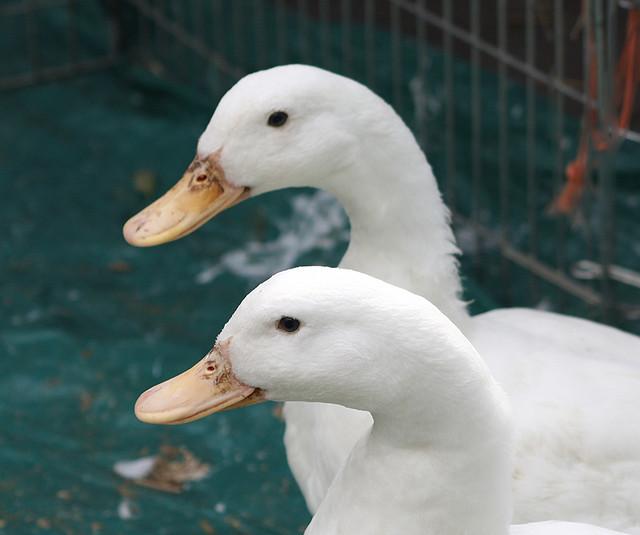France's agriculture ministry confirmed new outbreaks of H5N1 and H5N2 avian flu today, while reports in recent days by the World Organization for Animal Health (OIE) noted H5N6 avian flu in Chinese and Vietnamese poultry.
In related news, researchers reported that low-pathogenic avian flu is common among ducks on foie gras farms in Bulgaria. France's foie gras industry has been hit hard by outbreaks of the highly pathogenic versions of H5N1, H5N2, and H5N9.
France's outbreaks rise to 15
The two new outbreaks in France are in the Dordogne and Landes regions, each of which has had several previous outbreaks, according to reports from Reuters and France's Ministry of Agriculture.
The Dordogne outbreak involves a farm of 1,070 ducks in Bosset, where H5N1 has been confirmed, according to a ministry update. The other outbreak involves a 1,700-duck farm in Doazit affected by H5N2.
An analysis by health authorities shows that the H5N1 strain detected in France's first outbreak this year—the first in 8 years—shows that it does not contain genetic markers that would link it to more severe outbreaks in birds and to transmission to humans, Agriculture Minister Stephane Le Foll told Reuters.
"There is no risk of the H5N1 virus for human health, none whatsoever," Le Foll said, adding that the same is true for the H5N2 and H5N9 strains detected in the country.
H5N6 in China, Vietnam
In China, meanwhile, the H5N6 virus struck a peacock farm in Hunan province beginning Dec 7, according to a Dec 11 OIE report. Tests detected the highly pathogenic virus on Dec 11.
The virus caused 486 birds to become sick and killed 381 of them, the report said. The surviving birds in the 5,814-bird flock were euthanized to prevent disease spread. Chinese officials have implemented response measures, according to the report.
In Vietnam, H5N6 killed 500 backyard quails and sickened 1,000 more in a backyard flock of 4,000 quails in Quang Nam province in the central part of the country, officials reported to the OIE yesterday. The remaining 3,500 birds were culled to prevent further cases.
The outbreak started on Dec 4. Vietnam has confirmed a number of H5N6 avian flu this year, most recently on Dec 10.
'Silent' avian flu on duck farms
In research news, US and Bulgarian researchers conducted monthly avian flu surveillance on 63 foie gras duck farms, 52 of which were surveyed during the entire study period of November 2008 through April 2012. They also collected and tested samples from nearby resting areas for wild birds. They published their findings Dec 12 in Influenza and Other Respiratory Viruses.
The investigators found that low-pathogenicity avian flu was common on the farms. They detected low-path H3, H4, and H6 strains monthly and low-path H5 sporadically in the raising populations of younger ducks, and different subtypes—H1, H10, and H11—in the fattening premises (ducks 75 to 100 days old), suggesting different routes of introduction, they said.
Only 6 of 52 farms were free of avian flu viruses for the entire study period, "possibly due to higher biosecurity measures implemented," the authors wrote. No sick birds were reported on any of the farms.
The researchers also noted only a 0.55% prevalence of avian flu in migratory ducks and a 0.53% prevalence in wild geese. The team found no evidence of direct transmission of the virus from wild birds.
The authors concluded, "The 'foie gras' duck farms in Bulgaria are an optimal niche where Eurasian-like [avian flu viruses] are maintained and reassorted unapparent to farmers and veterinarians."
Foie gras is made from the liver of fattened ducks or geese.
See also:
Dec 14 Reuters report
Dec 14 France ag ministry update (in French)
Dec 11 OIE report on China
Dec 13 OIE report on Vietnam
Dec 12 Influenza Other Respir Viruses abstract





















